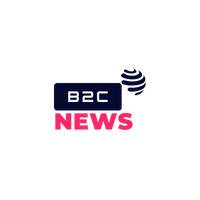ACH transactions are a type of EFT used for direct deposits as well as other payment types, such as electronic checks (eChecks) and peer-to-peer payments. EFT is an umbrella term for any digital method of moving money between accounts, either within the same bank or across different banks. ACH transactions are one type of EFT; others include wire transfers, credit card payments and real-time payments (RTP). After completing a bank reconciliation, it is essential to make journal entries for all items identified in the book column. This process ensures that the cash account accurately reflects all transactions that have occurred but were not previously recorded.
Compare Starting and Ending Balances
Wire transfers are generally considered final and irreversible once processed. P2P payment policies vary by platform, but often, once sent, the money is gone unless the recipient sends it back. These are checks received from customers that bounce due to insufficient funds in the customer’s account. Initially, the company records the receipt of the check, but when it bounces, the company must decrease its cash balance to reflect that the funds were never actually received.
What are the four types of electronic funds transfer systems?
Without accurate reconciliation, you might think you have more money available than you actually do. This can lead to bounced checks, overdraft fees, and embarrassing situations with vendors or employees. Regular reconciliation also helps you catch duplicate charges or incorrect bank fees before they accumulate. This reduces your accounts payable (a liability) and decreases your cash balance, reflecting the payment made. Discover how demand deposit accounts (DDAs) and earnings credit rate (ECR) can enhance your business’s cash management by reducing fees and improving liquidity.
One of the most common issues is missing transactions—such as deposits or payments that haven’t been recorded in either the bank statement or the company’s financial records. Incorrect amounts, whether due to data entry errors or miscommunications, can also create discrepancies that are difficult to resolve. Unauthorized transactions, including fraudulent withdrawals or double payments, can further complicate the reconciliation process and threaten your company’s cash balance. In summary, the most common items encountered during bank reconciliations include deposits in transit, outstanding checks, service charges, interest revenue, and NSF checks. Understanding these components is vital for maintaining accurate financial records and ensuring that the company’s cash balance reflects its true financial position. Bank errors occur when the bank makes a mistake in recording transactions.
- Regular reconciliation also helps you catch duplicate charges or incorrect bank fees before they accumulate.
- These are checks received from customers that bounce due to insufficient funds in the customer’s account.
- Effective reconciliation processes help detect fraud and uncover cash manipulations, which could indicate accounting errors or intentional wrongdoing.
BANK RECONCILIATION STATEMENT
These errors may include incorrect amounts being recorded by the bank, which need to be adjusted to ensure accurate financial reporting. It is important to identify and correct these discrepancies to maintain the integrity of the financial statements. Manual bank reconciliation processes are quickly becoming obsolete as businesses discover the power of bank statement reconciliation software. Modern platforms use artificial intelligence and machine learning to transform hours of tedious matching work into minutes of automated processing.
In a Bank Reconciliation,an EFT Cash Payment Is
If the bank charges a fee, this must be recorded as a decrease in cash, reflecting the actual amount available to the company. Similarly, interest revenue may be earned on the company’s bank account, which should be added to the books as it represents additional cash that was not previously recorded. As transaction volumes grow and regulatory requirements increase, automated bank reconciliation statement preparation becomes essential for efficient financial operations.
Common adjustments in a bank reconciliation, an eft cash payment is involve bank collections, electronic funds transfers (EFT), service charges, interest revenue, and non-sufficient funds (NSF) checks. Understanding these elements is essential for accurate financial reporting and maintaining liquidity in the accounting cycle. A bank reconciliation is a process where a company compares its internal financial records to the monthly bank statement provided by its bank. This ensures that the company’s cash records are accurate and align with the bank’s records. The importance of bank reconciliation lies in its role as an internal control mechanism.
- Since both adjusted balances match at $13,330, the reconciliation is complete.
- This is especially crucial for businesses operating on tight margins.
- This can lead to bounced checks, overdraft fees, and embarrassing situations with vendors or employees.
- This is a lifesaver for immigrants juggling time zones or busy schedules, letting you pay bills or send money home anytime.
Related insights
Accurate and timely reconciliation directly supports your company’s cash flow by preventing issues like overdrafts or missed payments. This is especially crucial for businesses operating on tight margins. Managing your finances is easier when you understand how money moves behind the scenes, especially with Electronic Funds Transfer (EFT). From paying bills and receiving your salary to sending money across borders, EFT is a secure, paperless way to transfer funds between bank accounts. In this beginner-friendly guide, we explain how EFT works, explore its most common types (like ACH and wire transfers), and show how it can simplify your financial life in the US and beyond.
Implement Strong Internal Controls
Bank fees, interest income, and other transactions like wire transfers or direct debits can also impact the cash balance and may not always be immediately reflected in your accounting records. Additionally, issues such as insufficient funds, overdraft fees, and non-sufficient funds (NSF) checks can cause unexpected differences between your bank statement and your books. Deposits in transit are amounts that have been received and recorded by the company but have not yet been recorded by the bank.
